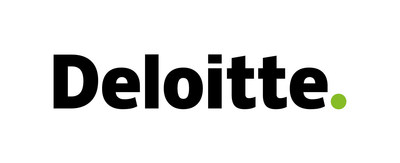TMCnet News
Legacy and Fielded Medical Device Risks Pose Greatest Cybersecurity Challenge to Connected Device EcosystemNEW YORK, Aug. 15, 2017 /PRNewswire/ -- More than one-third (35.6 percent) of surveyed professionals in the Internet of Things-connected medical device ecosystem say their organizations have experienced a cybersecurity incident in the past year, according to a recent Deloitte poll. Identifying and mitigating the risks of fielded and legacy connected devices presents the industry's biggest cybersecurity challenge according to respondents (30.1 percent).
"It's not surprising that managing cyber risks of existing IoT medical devices is the top concern facing manufacturers, providers, and regulators," said Russell Jones, Deloitte Risk and Financial Advisory partner, Deloitte & Touche LLP. "Legacy devices can have outdated operating systems and may be on hospital networks without proper security controls. Connected device cybersecurity can start in the early stages of new device development, and should extend throughout the product's entire lifecycle; but even this can lead to a more challenging procurement process. There is no magic bullet solution." Additional cybersecurity challenges that connected medical devices presented to respondents included embedding vulnerability management into the design phase of medical devices (19.7 percent), monitoring and responding to cybersecurity incidents (19.5 percent), and lack of collaboration on cyber threat management throughout the connected medical device supply chain (17.9 percent). Jones continued, "Collaboration between providers, manufacturers, and suppliers is key when it comes to bridging the gaps in medical device cybersecurity. This is a problem that requires the industry as a whole to come together and create a safe space where feedback and information can be shaed freely." Beyond cybersecurity risk management itself, there are post-incident risk management efforts to attend to as well. Few respondents (18.6 percent) say their organizations are "very prepared" to address litigation, internal investigations or regulatory matters related to medical device cybersecurity incidents in the next 12 months. "As regulatory, litigation, and internal investigation activities start to focus on post-market cybersecurity management, leading organizations are taking a more forensic approach to discerning the timeline and size of cyber incidents so the impact to intellectual property, client data and other areas can be addressed more quickly," said Scott Read, Deloitte Risk and Financial Advisory principal, Deloitte Transactions and Business Analytics LLP. "Forensic analyses responding to regulator, litigant, or whistleblower concerns may even help predict the next moves of cyberattackers." To protect against cyber threats in medical devices, Deloitte recommends a layered approach:
About the online poll About Deloitte Contact Lauren Hallman Deloitte refers to one or more of Deloitte Touche Tohmatsu Limited, a UK private company limited by guarantee ("DTTL"), its network of member firms, and their related entities. DTTL and each of its member firms are legally separate and independent entities. DTTL (also referred to as "Deloitte Global") does not provide services to clients. In the United States, Deloitte refers to one or more of the US member firms of DTTL, their related entities that operate using the "Deloitte" name in the United States and their respective affiliates. Certain services may not be available to attest clients under the rules and regulations of public accounting. Please see www.deloitte.com/about to learn more about our global network of member firms. View original content with multimedia:http://www.prnewswire.com/news-releases/legacy-and-fielded-medical-device-risks-pose-greatest-cybersecurity-challenge-to-connected-device-ecosystem-300504422.html SOURCE Deloitte 
|

